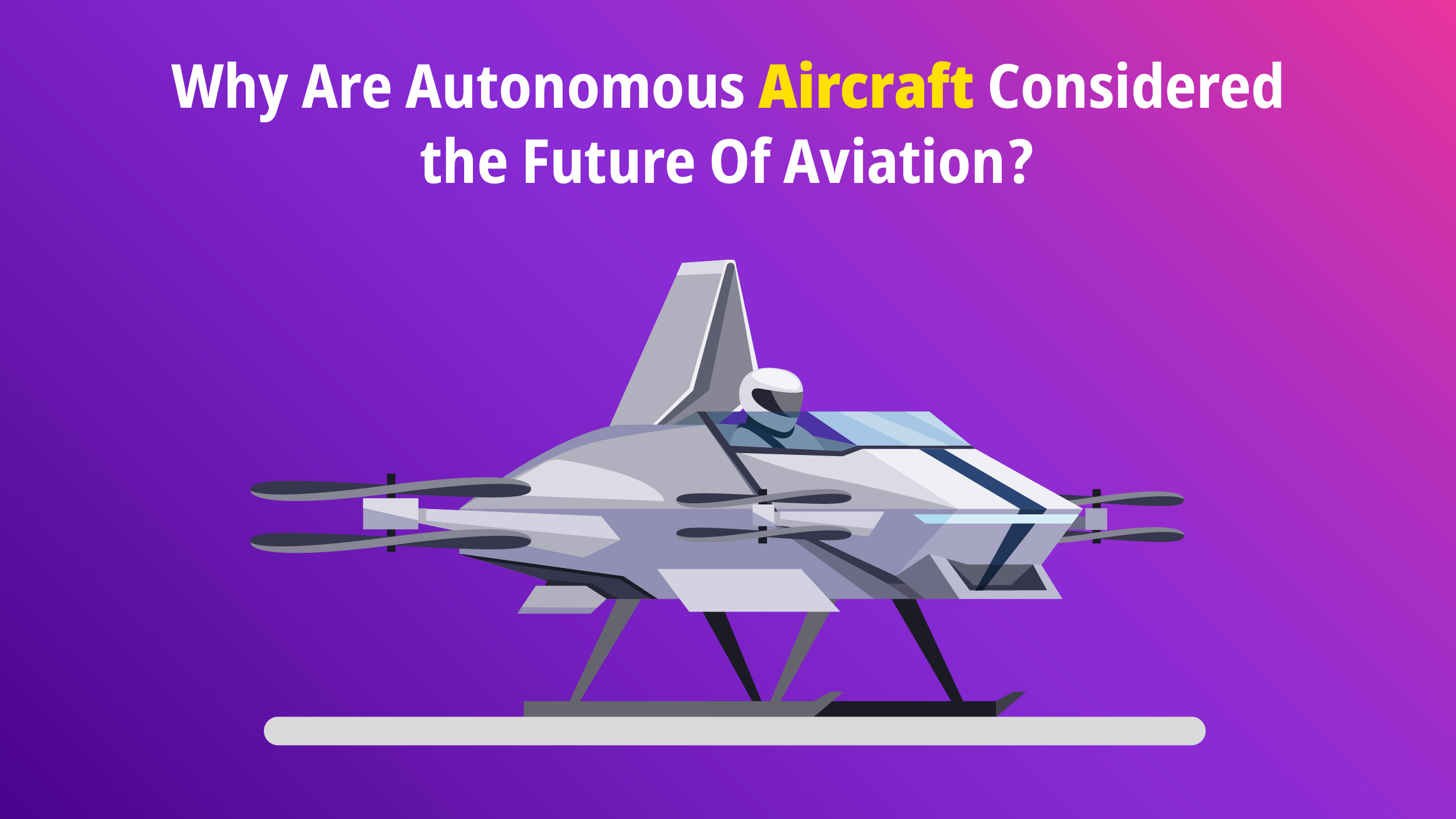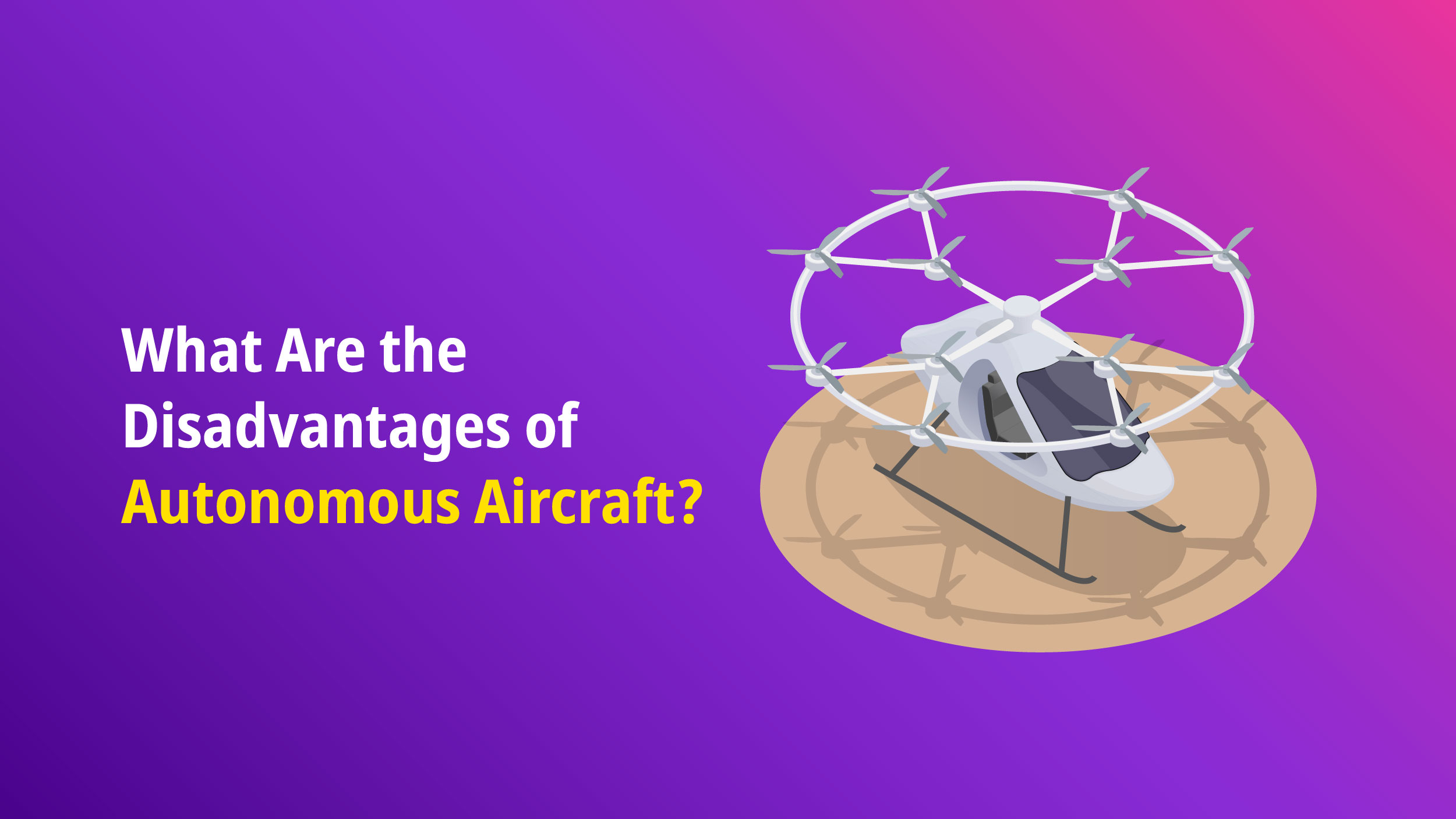Autonomous aircraft are here, and they’re rocking the world. These aircraft don’t need pilots or remote control. Does this mean artificial intelligence will drive the plane? Well, no. These are just preprogrammed aircraft that work on robotic systems.
Companies are already pooling their money on autonomous aviation and drone technology. In 2024, RapidFlight was awarded a $10 million contract for developing autonomous aircraft. Certain aviation technologies can lead to a zero carbon footprint. This article discusses the future, benefits, challenges, and the most important question of all – how safe are these? So, buckle up!
What is an Autonomous Aircraft?
An autonomous aircraft is an aircraft that is able to fly and operate without any direct human command and control and instead uses onboard autonomous robotic systems and technologies such as artificial intelligence (AI) and machine learning to carry out a pre-defined set of operations and tasks.
Most of today’s autonomous aircraft are unmanned aerial vehicles (UAVs) or pilotless drones that have pre-determined algorithms in place to carry out a specific mission. However, with the rapid progress being made in AI, the path is being cleared for larger-scale transports.
Why Are Autonomous Aircraft Considered the Future Of Aviation?

- Safety: These will greatly enhance the safety of flight. Taking humans out of the loop reduces errors or misjudgments that are a major contributor to accidents. These systems can be much more precise and repeatable than human operators.
- Efficiency: These aircraft will reduce fuel burn and improve the overall efficiency of flight. Self-flying aircraft can adjust to changing conditions in real-time and adapt to optimize the flight concerning air traffic, weather, and many other parameters, which could lead to shorter flight times and more optimal route profiles.
- Pilot Shortages: There is a shortage of qualified pilots to man the aircraft in the aviation industry. These self-driving aircraft can reduce the dependency on human pilots to some extent by performing certain operations, such as cargo flights or short-range trips, that do not require manned aircraft for operations.
- New Use Cases: Numerous use cases are being developed for self-driving aircraft. Aerial delivery, emergency airborne cargo delivery, surveillance, etc. are some of them. Urban air mobility is also another area where autonomous air taxis can be developed to transport people from one location to another. These are some of the examples that can disrupt the transportation sector and offer unique solutions to many problems that society encounters.
Also Read: Behind the Scenes: Aircraft Manufacturing Soars to New Heights
Are Autonomous Flights and Autonomous Aircraft the Same?
Autonomous flights and autonomous aircraft are somewhat similar but not identical. Autonomous flights describe an aircraft’s capability to carry out a flight plan and achieve some objectives without human intervention. For example, modern aircraft can fly autonomously according to a pre-defined flight plan made by pilots. However, they still need human support and monitoring. Typically, autonomous flights use sophisticated systems like flight management systems and autopilots for flight navigation and communication.
In contrast, autonomous aircraft is a broader term describing aircraft that think, act, and perform tasks autonomously without any human support. These can aviate, navigate, and communicate without human pilots or even remote operators. Such aircraft deploy advanced technologies, including artificial intelligence (AI) and computer vision, to decide and adapt to various operational scenarios during flight and the execution of tasks.
What Are the Disadvantages of Autonomous Aircraft?

- Technology Development: Self-driving aircraft technology is in its infancy, and researchers are still developing and improving the algorithms and control systems. This may pose difficulties in ensuring the quality and safety of these control systems when deployed in the real world.
- Privacy and Security: Like any drone, self-driving aircraft are capable of mounting cameras and other monitoring devices, such as sensors and electronic counters. Concerns regarding data mining, storage, and security of information, as well as the potential for hacking and unauthorized operation of the aircraft, must be addressed. Furthermore, the malicious use of these aircraft is also a concern.
- Ethical Considerations: The development of autonomous flight technology creates significant ethical considerations around the use of artificial intelligence and machine learning algorithms in the aviation sector. Bias and discrimination might be built into the algorithms. This can potentially lead to a lack of integration of accountability and responsibility in the event of an accident or incident.
Are Autonomous Aircraft Considered Safe?
Autonomous aircraft are generally considered safe for several reasons. First, human error is a contributing factor in a lot of accidents. Eliminating this scenario can help mitigate this risk.
Secondly, new technologies such as artificial intelligence, machine learning, and highly capable sensors allow autonomous systems to perceive their environment, reason about the perceived data, and take action more accurately and efficiently. This can result in safer aircraft in terms of both accuracy and reliability.
Self-driving aircraft are also well suited to repetitive operations and can follow a pre-determined algorithm, thus increasing repeatability and precision and contributing to safety. Finally, systems to monitor the aircraft and detect any deviations or errors can contribute to a safe aircraft.
Conclusion
By monitoring both the aircraft and the system in real-time, any exceptions can be detected and corrective action taken before an accident occurs. All these factors might point us toward pilotless aircraft in the future. Of course, there are many factors to take into account, such as cyber security, human interaction, regulation, and policy, and these contribute to safe autonomous aircraft.




